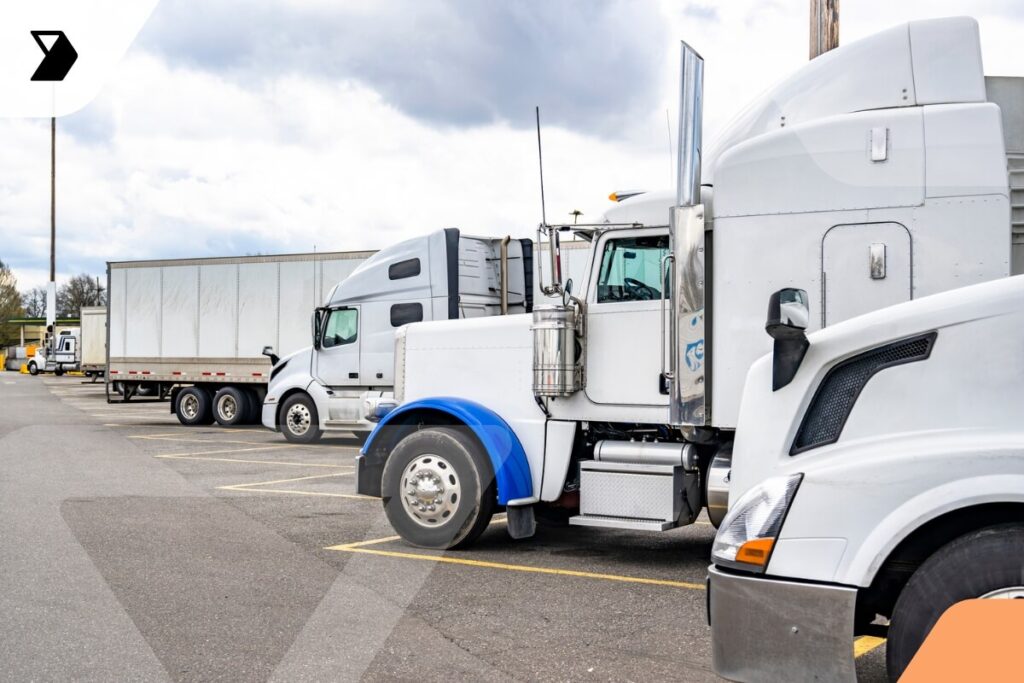Pick Ticket: The What, Why, & Examples – Everything to Know
Have you ever wondered how a warehouse works? How organized does it need to be so that everyone gets the items they ordered?
Ready to transform your supply chain?

It’s more or less like Santa’s workshop, only without the magic. Yes, that’s right! It must be super organized.
March 12, 2020
So, without Santa’s magic, how do we achieve this level of organization? With pick tickets! You may find “pick ticket” under other names, such as:
- Pick slip
- Packing slip
- Packing ticket
In short, a pick ticket is a list with all items a shipper must pack and ship to a buyer. But let’s explore the pick ticket a bit more, including its advantages and the information in it.

What Is a Pick Ticket?
A pick ticket is a list that tells warehouse pickers what products to pick from the place where they’re stored in the warehouse. The pick ticket contains the items to pack and the quantity of each. Sometimes, the pick ticket also tells the picker the order in which to pick the items.
Usually, a pick ticket may be either a paper or a digital document. It contains information on the shipment, the destination, and the items to dispatch. At the origin of the shipment, the process that involves the pick ticket is as follows:
- The supplier, manufacturer, or producer receives an order from a buyer.
- Then, they generate a pick ticket.
- After that, the pickers use the pick ticket to pick products before packaging.
In case the shipper has a warehouse management system (WMS) or an inventory management system (IMS), that system automatically generates a pick ticket for each received order.
Now that you know more about what a pick ticket is, let’s discuss the importance of pick tickets.
Why are Picking Tickets Important?
Back in the old days, all pick tickets were pieces of paper. Nowadays, pick tickets are typically digital, and pickers view them with mobile devices. If the mobile device allows product scanning, then there’s less chance of human error. Plus, product scanning enables you to measure a picker’s performance.
An efficient order picking process with a clear and simple pick ticket allows reducing warehouse labor hours. Consequently, warehouse labor hours decrease. And because a great amount of warehouse operation costs are labor costs, pick tickets benefit warehouse operation cost optimization. That’s due to order picking costs being labor costs.
Lastly, pick tickets must make part of your warehouse expansion strategy. It’s only possible to expand a warehouse if its operation costs are optimized. And pick tickets are starring actors in that optimization!
Before delving into the structure of a pick ticket, you must learn about picking methods. Why? Picking methods influence the way the WMS or IMS generates the list of products in a pick ticket. The next section shows you how.
Pick Tickets and Picking Methods: How Are They Related?
Not all warehouses use the same picking method. And the structure of pick tickets depends on the picking method. But in what way, exactly?
First, you must understand that picking methods depend on several factors:
- The number of products in orders
- The urgency and volume of orders
- The size of the business
- Whether picking is manual or automatic
The most common picking methods that we’ll discuss are pick-to-order, batch, and zone picking.
Pick-To-Order
Smaller warehouses shipping few products use the pick-to-order picking method. It’s a method for picking products for a single order at a time as orders come in.
Imagine a picker takes too long picking products for an order. Since the pick-to-order fulfills orders sequentially—one after the other—if a delay occurs in picking products to an order, all orders after that one will suffer a delay as well. After reading the next section, you’ll get to the conclusion that pick tickets make picking faster. For that reason, even if a delay happens, its effects are minor compared to if the picker didn’t use a pick ticket.
In the pick-to-order picking method, a pick ticket contains products for a single order.
Batch Picking
The batch picking method is a slight variation to the pick-to-order method. With batch picking, pickers pull products for more than one order on a trip around the warehouse. So, pickers pull products in batches. After that, they deliver the items to a packaging area. Lastly, other warehouse staff—or, sometimes, the pickers themselves—sort and pack orders for shipping.
In the batch picking method, a pick ticket contains a batch of products for different orders. The picker must pick those products on trips around the warehouse—and those trips can be calculated and optimized.
Zone Picking
Contrary to the other two picking methods, zone picking—or wave picking—is based on products instead of orders. This means that zone pick tickets contain a list of products to pull from a specific zone in the warehouse. In other words, the picker may pull items that originate from one or more orders. However, the location of all the items pulled is within the same zone of the warehouse.
Consider that, in this method, each picker works in a specific zone. Zone picking is like this:
- The shipper receives orders from buyers.
- Then, each picker pulls products placed in their zone according to the products in the pick tickets they receive.
- After pulling all items, pickers deliver them to the sorting and packaging of individual orders by other warehouse employees. Sometimes, pickers do that themselves.
When pickers view pick tickets with mobile devices, the WMS or IMS automatically updates pick tickets as orders come in.
A variation of zone picking occurs when pickers pull products on an order basis:
- Pickers pull items in their zone for a specific order and pass the order on to the next zone.
- In the last zone, the picker pulls the items and hands off the order for packaging and shipping. Sometimes, they do that themselves.
In the zone picking method, a pick ticket contains products from the same zone within the warehouse. And they may or may not refer to the same order.
So, let’s review for a moment. So far, we’ve learned
- What a pick ticket is
- The benefits of a pick ticket
- How different picking methods influence their filling
What else do we need to know? That’s right—the fields that compose a pick ticket!
What Are the Fields in a Pick Ticket?
Pick tickets are internal documents, meaning that usually, buyers don’t see them. Therefore, pick tickets should only contain information relevant to the picking task. That helps to prevent errors by distracting pickers when pulling items from their location.
Although the information in pick tickets will vary based on the picking method, all of them likely have the following fields.
Buyer Information
The pick ticket should contain the buyer’s name and address. Including that information ensures that, upon order packaging, orders contain the right products for the right buyer.
Pick Ticket Number
The pick ticket number must be unique and easy to find in the pick ticket. It serves as a reference to find pick tickets and retrieve picket tickets for order audits and employee performance reviews.
Order Information
The pick ticket also contains order details, such as order date and time as well as order number.
If you use a WMS or an IMS, you should also include the order barcode in the pick ticket. Packing and shipping staff can scan order barcodes for order processing and order fulfillment purposes. It’s way faster!
Product Location in the Warehouse
The pick ticket must indicate each product’s exact location in the warehouse. Bigger warehouses may have more complex location codes, yet they must be very clear.
A product’s location may contain a zone number, a row number, a shelf number, etc.
SKU
A stock keeping unit (SKU) identifies a product, and warehouses use SKUs to track inventory. Each shipper can define their own SKUs. A SKU might define the type of product and, for instance, its color.
Pickers look at SKUs in pick tickets to compare with those in the products. So, SKUs must be clear and easily visible in pick tickets. Otherwise, picking mistakes may happen!
Product Details
Another way of avoiding picking errors is to include the products’ names and descriptions next to the corresponding SKUs. This is particularly helpful when SKUs on the pick ticket are very similar.
Product Size and Weight
In warehouses with products of many different sizes and weights, including products’ sizes and weights on the pick ticket is useful for a number of reasons:
- An automated system can use this information to determine the trip of a picker around the warehouse. The system calculates the trip based on the room available in the picker’s vehicle or basket to pull all products.
- This information can help the picker identify items for which there’s a second person or specialized equipment needed to lift the items.
Unit of Measure
Some products are sold in sets—like cases—and others are sold individually. Specifying the unit of measure in the pick ticket prevents a picker from opening a case to pick a single unit of a product when the buyer ordered the whole case. Also, if for some reason a product that can be sold individually is stored in the warehouse inside a case, the pick ticket tells the picker that they can open the case to pick a single unit of that product.
Pick Quantities
The pick ticket should contain two quantity fields per item:
- One for the number of items to pick
- Another for the number of items actually picked
An IMS may be out of date, which means that the shipper may not know that a stock break occurred. However, knowing the difference between the two quantities above advises the shipper on stock breakages. That way, the shipper can warn the buyer and apologize on time for the inconvenience.
Pick Ticket Accountability
A WMS or an IMS plus a good pick ticket template may not be enough to prevent human error in order picking. So, the pick ticket should contain fields for accountability:
- Picked by. This field is for the picker’s signature. It’s used to confirm that they reviewed the correspondence between pulled products and products in the pick ticket. And it includes non-pulled ones.
- Checked by. Before order packaging and shipping, someone other than the picker performs a double-check on pulled and non-pulled items.
Key Takeaways On The Impact Of Pick Tickets
A pick ticket may contain all or only some of the fields described in the previous section. Of course, some are more crucial than others and depend on factors, like the picking method, outlined in this post.
It’s possible to create a pick ticket template from scratch with basic document creation software. But that can be a nightmare! On the other hand, it’s a pretty good investment if you want to scale your shipping and, consequently, your business.
Consider going mobile if you haven’t yet. Using pick tickets through mobile devices boosts your warehouse operation!
This post was written by Sofia Azevedo. Sofia has most recently taught college-level courses in IT, ICT, information systems, and computer engineering. She is fond of software development methods and processes. She started her career at Philips Research Europe and Nokia Siemens Networks as a software engineer. Sofia has also been a product owner, working in the development of software for domains such as telecom, marketing, and logistics.
Continue reading
Ready to transform your supply chain?
Increase efficiency and productivity. Say goodbye to delays, handwriting errors, and time-intensive manual data entry.



